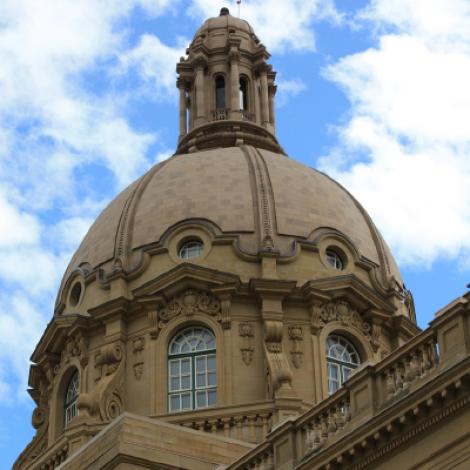RMRF's preliminary analysis of Bill 1
Last updated Dec. 7, 2022
Following last week's introduction of Bill 1, The Alberta Sovereignty within a United Canada Act, Alberta Municipalities solicited a preliminary analysis from Reynolds Mirth Richards & Farmer (RMRF).
A partial summary of RMRF's findings as to how the legislation may affect municipalities is presented below. Click here for the law firm’s full initial analysis.
Practical Impact
While there are still two readings, much debate, and possible amendments to be done in relation to Bill 1, in its current form there are a number of impacts that will be felt by public bodies that receive and exercise their authority through statute. “Provincial entities” is defined in the Sovereignty Act to include:
- post-secondary institutions
- any entity that carries out a power, duty, or function under an enactment (including municipal commissions and boards)
- entities that receive grant funding or other public funds from the Government of Alberta that are contingent on the provision of a public service
- regional health authorities
- municipalities
- school boards
- municipal and regional police services
If the Legislative Assembly is of the view that a federal law, program, policy, agreement, or action is unconstitutional or harmful to Albertans, it would have the ability under the Sovereignty Act to issue a resolution that then gives Cabinet the authority to issue a directive to any provincial entity regarding the applicable federal law, program, policy, agreement or action. It is not clear what the extent of that directive would be, although the Sovereignty Act does state it should not be interpreted as a directive that would require a person “other than a provincial entity” to act contrary to or violate a federal law. The implication of this is that a directive issued by Cabinet could, in fact, require a provincial entity to act contrary to or contravene a law of Canada.
More controversially, however, is that the current version of Bill 1 says that once the Legislative Assembly passes a resolution (requiring only one vote), Cabinet can order that existing laws will not apply, or can add new sections to existing legislation. This unusual provision puts the law-making power in the hands of Cabinet, rather than in the hands of the members of the Legislative Assembly.
The current version of Bill 1 would also give Cabinet the power to direct provincial entities not to implement or adopt that federal “initiative” provided the Legislative Assembly views the federal initiative to be unconstitutional or harmful to Albertans.
“Harm” is not defined in the Sovereignty Act, which makes it challenging to determine what the Legislative Assembly would view to be harmful to Albertans at any given time. For that reason, it is not possible to predict what types of situations would cause provincial entities to receive a directive or order not to follow a certain enactment. Given that determination is entirely in the hands of the Legislative Assembly, it will be up to the Legislature’s members to determine what is and is not harmful to Albertans and then entirely in the hands of Cabinet to determine how to address that potential harm.
Ultimately, if a provincial entity is subject to an order or directive under the Sovereignty Act and it is opposed to that order or directive, its only recourse is to seek judicial review of the decision or action of Cabinet. If a provincial entity seeks judicial review, it must be cognizant of the 30-day timeline in the Sovereignty Act for filing and serving that application, as this is less time than what is typically provided. Like many Albertans, we will continue to watch the development of this Act with interest and will be available to provide updates and guidance to provincial entities as needed.

